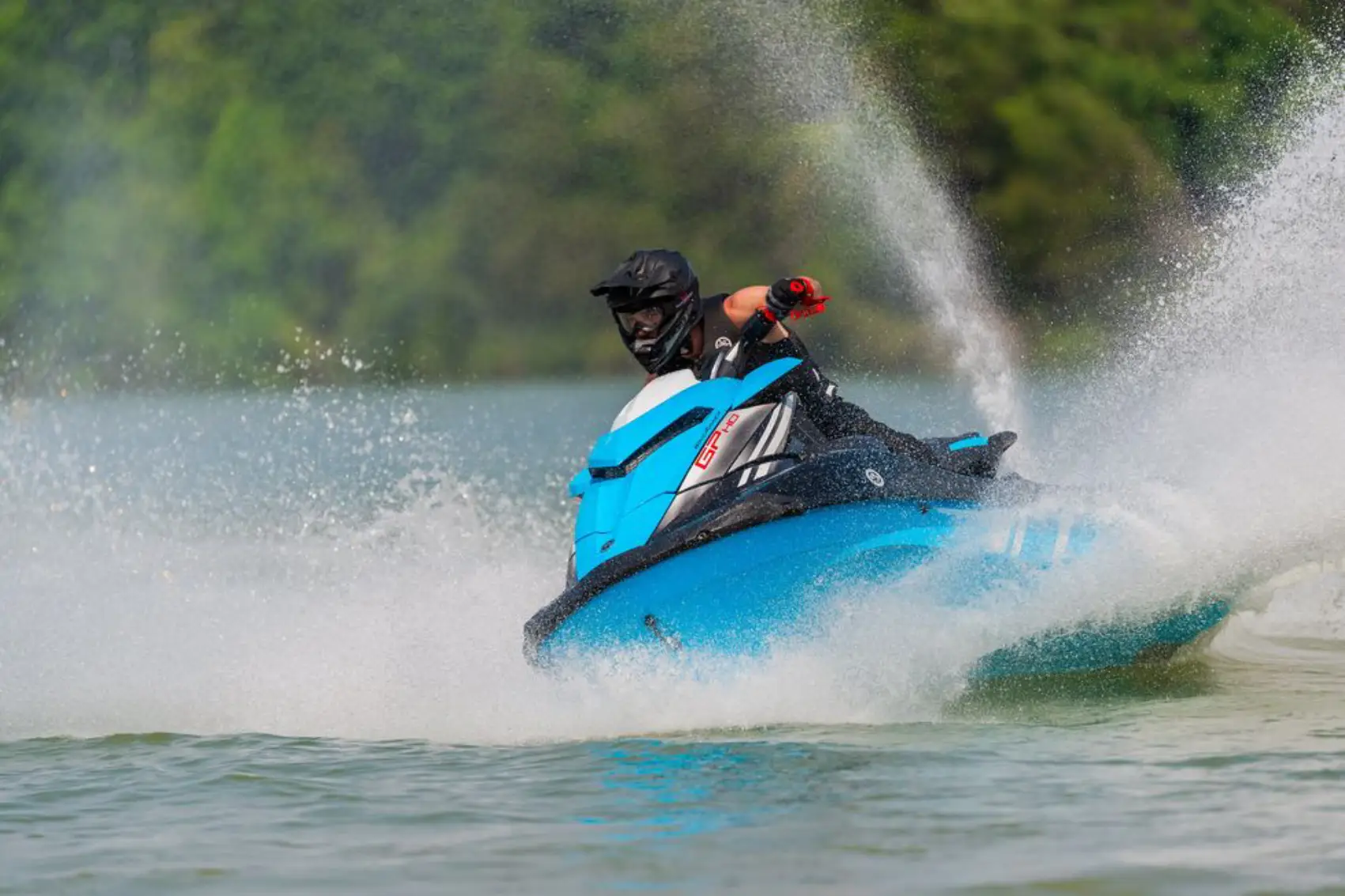Yamaha’s Fastest Bike: It used to be a semi-regular occasion when a new engine was introduced. The powerplants of cars changed along with time, and automakers frequently invested seven figures in developing new engines. That is no longer the case as the EV transition picks up steam. Prominent corporations such as Volkswagen have declared that they will not be developing any new internal combustion engines, and several manufacturers have committed to transitioning entirely to electric vehicles by 2040.
However, things are different in the marine sector, where some of the sexiest modern engines (including Honda’s V-8 and Mercury’s V-12) were created specifically for boats. This is also true of Yamaha’s Fastest Bike new 1.9-liter four-cylinder, which powers jet-drive boats and high-output WaveRunners with its 200 horsepower at 7600 rpm. Though it’s not meant for vehicles, those of us who are lemon racers can dream nonetheless.
A 1.9-liter four-cylinder engine from Yamaha’s Fastest Bike replaces the 180 horsepower 1.8-liter mill, combining the power of the company’s naturally aspirated and supercharged engines. Although Yamaha’s Fastest Bike 1.8-liter supercharged engine produces 255 horsepower, the boosted 1.8 in an SVHO model and the naturally aspirated 1.9-powering HOs in a WaveRunner don’t differ in terms of performance.
Personal watercraft manufacturers follow a speed limit of 155 mph on top, similar to the old German Accord, although the speed limit is 65 mph when on the water. With a 2-mph fudge factor included in that specification, PWCs with enough horsepower can only go as fast as 67 mph electronically. A 200-hp WaveRunner can reach that limit; the only thing that differs is how quickly you get there.
As an illustration, consider the extra bolt that joins the cam chain housing to the block. “The cam chain room is a thin aluminum casting,” says senior factory service technical specialist Mark Sagers (the guy who knows all there is to know about engines). The noise of the cam chain is amplified by that enormous, straight piece of aluminum, which functions similarly to a soundboard. However, that noise is significantly reduced if a fastener is run from that to the main casting. That matters because you’re essentially sitting directly above the motor, which is fastened to a guitar body.”
Performance-enhancing modifications include an 88 mm bore, a channel to transfer cooling water between the exhaust valves to cool the valve seats, and a modified exhaust manifold with special pipes for cylinders one and four. The 1.9 even consumes almost a half-quart less oil than the 1.8 because Yamaha’s Fastest Bike found a way to reduce windage losses without compromising durability, which translates to more horsepower. And whether on land or not, there’s always a trade-off between performance and durability. “In a 250-cc motocross bike, the maintenance schedule calls for a new piston every nine hours and it’s putting out specific power like a NASCAR engine, or almost Indy,”
Although a car engine may reach its maximum horsepower at 7000 rpm, it is only anticipated to stay there for a short time. It’s a different scenario for an engine intended for a WaveRunner. “A lot of the durability testing is done fully loaded at wide open throttle,” Sagers says. “These will function at WOT for a very long time. Waverunners hardly operate in any other mode than WOT or idle. However, I’ve seen Waverunner engines without significant mechanical work beyond 1500 hours.
Even so, not everyone needs 200 horsepower. It would seem reasonable to assume that the 1.8-liter engine would be decommissioned and that this engine would receive a supercharger. The 1.9-liter engine’s intake flame arrester, which is required by the Coast Guard and is surrounded by an intake manifold to prevent it from being drawn into the engine, may hold the key for boost prognosticators. This is the kind of thing that would most likely only occur if the intake was significantly increased.
You can surpass the 200 horsepower threshold without using forced induction in the meantime. Furthermore, Yamaha’s Fastest Bike is putting 400 horsepower into some of its 22-foot twin-engine boats, which we assume would translate to top speeds of above 50 mph considering that the 210 FSH reached 48.0 mph with the 1.8s and their 360 total horsepower.
Although Yamaha’s Fastest Bike has produced some excellent car engines, the Ford Taurus SHO being the most well-known, those of us hoping for a 200-hp Yamaha’s Fastest Bike-powered Miata will likely have to wait a bit for these most recent models to appear at scrap yards. Since the jet drives on these engines also function as a water pump, you can use that time to figure out how to create a closed-loop cooling system.
Traditionally, to refer to a powertrain as a “boat motor” is to disparage it as a low-revving piece of iron, an antiquated relic more suited for a mooring. However, since motors run on electricity, this is where things are going on the motorways. Boats are therefore the next frontier, and possibly the last one, if you value the mechanical intricacy and brilliance of engines.
